Shree Padmaprabhu Bhagwan: Life Stories of the Sixth Tirthankara
Shree Padmaprabhu Bhagwan was the sixth Tirthankara of the present time cycle. His height was 250 bows.
Shree Padmaprabhu Bhagwan’s symbol is Padma, meaning lotus. Kusum Yaksh Dev and Achyuta Yakshini Devi are His Shaasan Dev and Shaasan Devi, respectively. Come, let’s now read the life story of Lord Padmaprabhu’s past two births and His birth as a Tirthankara.
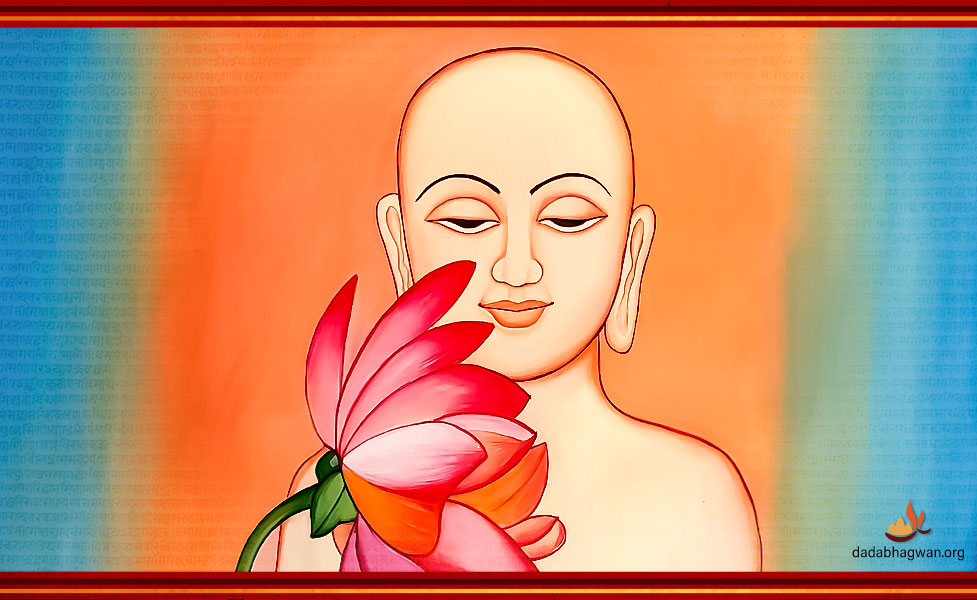
Shree Padmaprabhu Bhagwan – Past Births
In the past birth, Shree Padmaprabhu Bhagwan was King Aparajit ruling in the Susima Nagri, located in Vatsavijay in the Ghatki Khand Dweep’s Purva Mahavideh Kshetra. Aparajit meaning not to get defeated by anybody. No matter who the enemy was, he would never get angry. He was very straightforward, sheelvan and truthful. The king himself was a religious person and people would learn religion just by observing him.
The king passed his worldly life without any attachment; he was not attached to money, power or anything like that. After having ruled the kingdom for many years, he happened to listen to the Deshna of a Tirthankara Bhagwan. Listening to that Deshna, he felt that worldly life is meaningless, and hence, developed dispassion towards the world. He took Diksha, and thereafter, performing spiritual practices with great devotion, he bound the Tirthankara gotra.
In his next birth, he reincarnated as a celestial being in the ninth heaven.
Shree Padmaprabhu Bhagwan – Birth, Keval Gnan, Deshna
After completing the lifespan in the ninth heaven, Lord Padmaprabhu’s took birth in the Bharat Kshetra’s Kaushambi Nagri at King Dhar’s and Queen Susima’s place. He was born with a great intent of world’s salvation.
The biggest reason behind a Tirthankara gotra being bound is that the entire life is for the welfare of people; there is no single thought for one’s own self. Not a single thing is for one’s own self. How people’s welfare can happen, how people can attain the supreme state, how they can attain salvation—only such intent is in the heart. When that intent persists constantly, the Tirthankara gotra is bound.
When the Lord was in the womb, Queen Susima had felt like sleeping on a bed full of lotus flowers (padma shaiyya). The face of the newly born Lord also was very beautiful and glowing akin to a lotus flower. Therefore, the Lord was named Padmaprabhu.
In the due course, Lord’s marriage took place. He was crowned as the king. Later, He took Diksha. Six months after Diksha, the Lord attained Omniscience (Keval Gnan).
After Keval Gnan, the celestial beings created Samovasaran. In His Deshna, He described the sufferings that one undergoes in the four life forms (gatis). Listening to this, one develops tremendous dispassion towards worldly matters; how do I escape from the four gatis and how do I attain the fifth gati, the Moksha gati—that desperate desire begins.
The four gatis are as under:
- Tiryanch gati (the life form that includes all one to five sensed living beings except humans)
- Manushya gati (human life-form)
- Dev gati (celestial life-form)
- Narak gati (infernal life-form)
Our Universe is in the shape of a human being and is divided into three parts:
- In the upper part is Dev gati.
- In the middle part, meaning the Madhyalok, are the Tiryanch gati and the Manushya gati, which we all can see and experience.
- In the lower part is the Narak gati.
Sufferings in the Tiryanch Gati
From one-sensed to five-sensed living beings, other than the humans, are said to be Tiryanch. Trees, vegetation, green algae, etc. are one-sensed living beings; where only one sense has developed and that is of touch. There is enormous pain these beings undergo. They have to bear the scorching heat, the torrential rains and the biting cold. But these beings have no means to express the pain. Therefore, one-sensed living beings have tremendous suffering and suffocation internally.
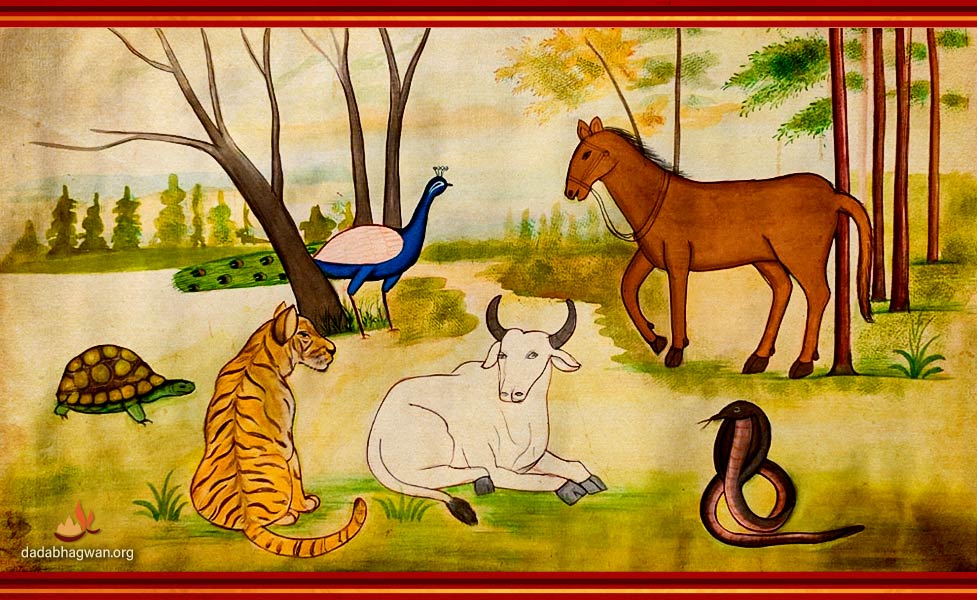
From one-sensed, a living being develops to a two-sensed living being, then three-sensed living being followed by a four-sensed living being, and finally evolves into a five-sensed living being. Animals, fishes and many other living beings in a sea are five-sensed living beings. They have immense suffering. Animals, mute living beings feel hungry and thirsty, but they can neither tell nor bear. From where can they get food—day and night that thought only is going on in their mind; they are in fear all the time. Big fishes eat away small fishes; therefore, small fishes are always scared of big fishes. The big fishes, in turn, fear crocodiles that are bigger than them. In the life of these creatures, there is a constant fear; they have tremendous suffering due to fear.
Suffering in the Manushya Gati
After wandering in 84 lakh yonis, when living beings finally come and get completely developed with five senses, that’s when they get Manushya gati. In Manushya gati, there’s a bit more advancement that has happened. Mind-intellect-chit (inner faculty of knowledge and vision)-ego, anger-pride-deceit-greed—all are expressed in humans. In the other life forms, these are in a dormant form; they are in a meagrely developed form.
In human beings, a sense of doership arises. One feels, “I am doing”; therefore, one binds karma and experiences enormous suffering. This cycle of binding and unfolding terrible karmas keeps on going.
Humans have to stay in the womb for nine months, which is like a punishment to be in a dark jail. No kind of expression is possible there. One may feel hungry or thirsty, but whom to tell? One cannot escape the tremendous suffering that one has to go through while in the mother’s womb, no matter how hard one tries. The suffering continues to come. Until one is born, that suffering does not end. Not only that, if mother eats something spicy, the child feels so much of burning inside and goes through a lot of suffering. However, the child has no remedy for that—cannot tell, cannot bear, nothing can be done!
At the time of birth also, the child has tremendous suffering. It cannot escape from that suffering by any means. If one wants to be released from this vicious cycle of birth and death, there is only one remedy, and that is, attain the fifth gati—attain Moksha gati! Until one does not go to Moksha, this cycle continues endlessly. After being born in the Manushya gati, once again, one has to start studying from scratch. Then again, one has to die and once again the same worldly life–eat every day, sleep every day, get up every day; this cycle is a daily affair; there is no end to it. During this entire evolution from one-sensed to five-sensed human being, one has to pass through 84 lakh yonis. Microbes, insects, worms, bugs, centipedes, dumb animals, the jungle creatures such as lions, tigers, wolves—one has to pass through all of these. There is a lot of suffering in each of these creatures’ life. Even thereafter, the cycle is on; we do not get released from that.
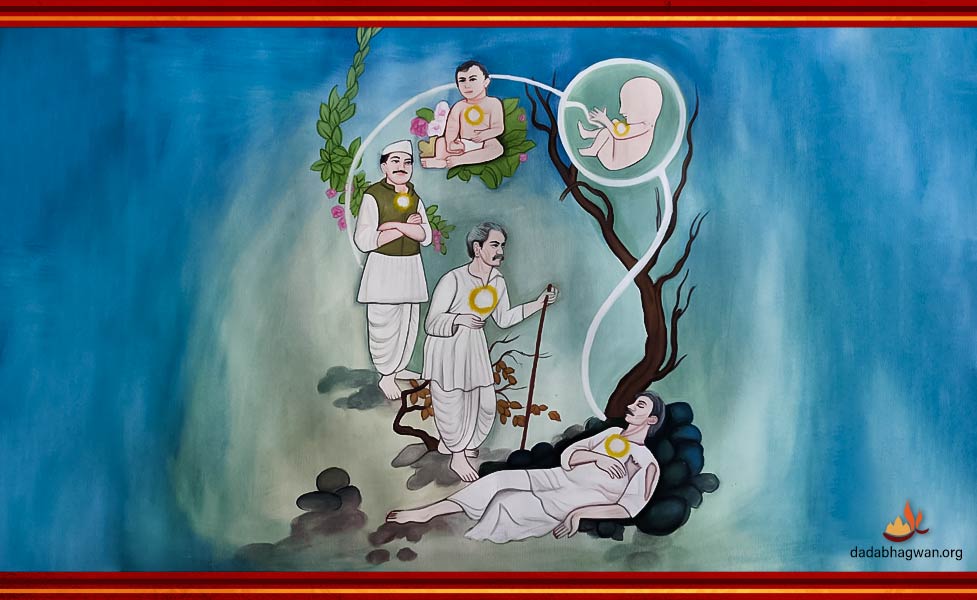
To get released, the Tirthankara Lords have shown a beautiful path—know thy Self! Only when you come into the human life-form, you can get enlightened and become worthy of attaining Moksha, because one can attain Moksha only in human life-form. Therefore, when we get human life, it is a very precious one. When a living being passes through 84 lakh yonis and goes through millions of reincarnations, only thereafter, one gets the human life, the value of which is enormous. People do not know the value of this. Amongst all life-forms, the most precious one is the human life-form, from where one can go to Moksha; one can attain the Soul; one can meet the Enlightened One.
The Enlightened One is in human life-form only, and only humans can get enlightened with the grace of the Enlightened One (Gnani). To listen to a Gnani’s, Tirthankar’s Deshna, even celestial beings aspire to take birth as human beings. Now to understand and make the best use of such most precious human life that we all have already obtained is our Purusharth (effort).
Suffering in the Dev Gati
In the Dev gati (celestial life-form), there is happiness that has no bounds; the moment you wish, everything becomes present before you; the moment you decide anything, it is done. They have all the happiness. There is a fragrant atmosphere; there are dances of Apsaras; there is music. The celestial beings enjoy comfort and luxury all the time. Dev gati is for enjoying the fruits of the merit karmas that one has earned. These beings have enormous external happiness; but they also have immense internal suffering owing to kashays (inner enemies of anger, pride, deceit and greed). They have a lot of jealousy, envy, mine-yours, revenge and vengeance in them.
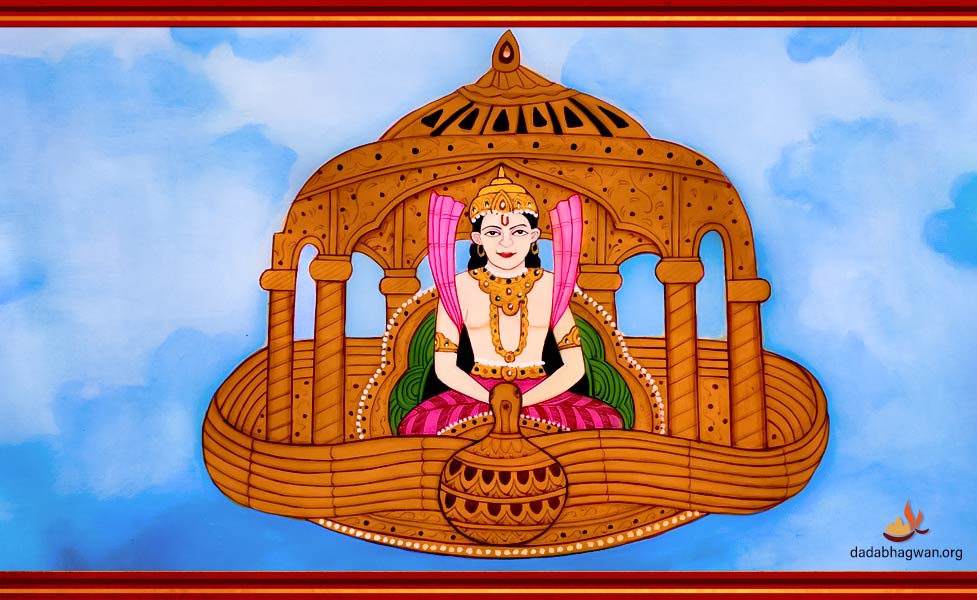
In the celestial life-form, one neither takes birth from the womb of the mother nor gets old and die. When one is born and when one dies, it happens in the state of youth only. One is constantly in that state only. Six months prior to the time of death, these beings receive an indication—the garland of flowers in their neck begins to wear out. This causes great agony to them. Through Avadhi Gnan, they can see that from where they had come here and where will they be born next. Having to leave behind all the comforts and seeing their next birth place, they go through even more suffering. Internal suffering due to kashays is severe. Externally, there is total luxury.
Despite having the pleasures of Dev gati, these beings have the suffering of kashays. Freedom from the suffering of kashays begins when one attains Self-Realization. When one attains Keval Gnan and goes to Moksha, the suffering ends completely; there, one experiences bliss forever.
Suffering in the Narak Gati
The pain that one goes through in the Narak gati (Hell) is so horrendous that it cannot be described in words. It is said that if the Tirthankaras or Gnanis describe it, many people (after listening to that description) would fall unconscious and die on the spot. There are two types of hells: hot and cold. In both, there is extreme heat and extreme cold (which we cannot even imagine), respectively. While suffering its effects, one feels like running away from there, but there is no escape possible. This affects the hellish beings unimaginably.
Moreover, their body (of hellish beings) is made up of matter similar to mercury. So, no matter how much the body is cut or broken into pieces, one has to suffer the agony. When mercury is cut, it merges and once again becomes one. Similarly, the body of hellish beings also is such that its parts merge and become intact even when cut into parts; it does not come to an end.
One has to go to hell to suffer the grievous sins bound in human form. If one is committing adultery or having illicit sex, one gets the Narak gati. As punishment, one has to embrace the burning hot iron lady, so as it burns, one remembers own past deeds (sins). One who is addicted to alcohol also has to suffer terribly—burning iron is liquefied and one is made to drink that; it burns terribly inside.
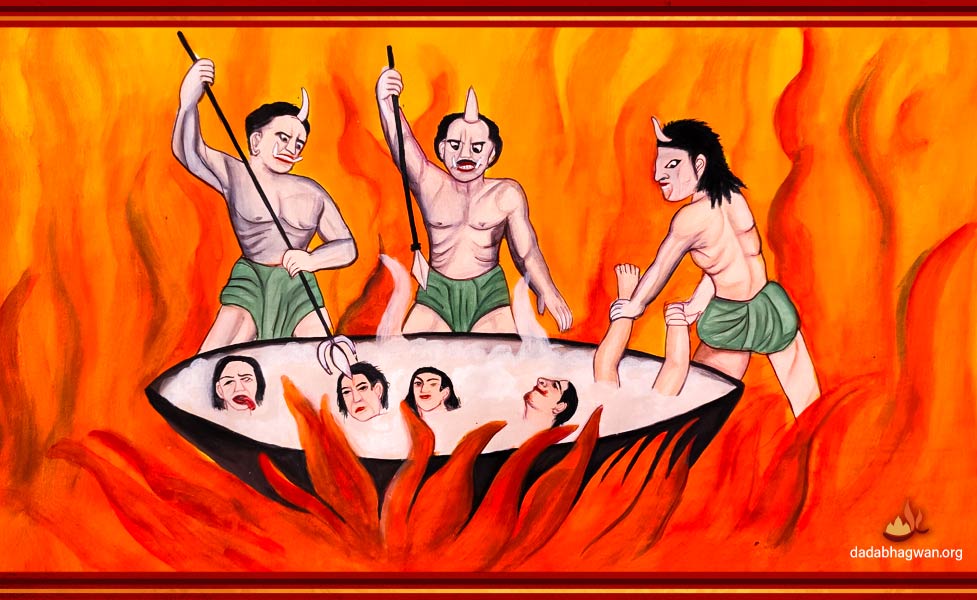
One is made to walk on thorns; the body is bashed like clothes; it is cut with saws. Just like oil is extracted from sesame seeds or peanuts, the body in Narak gati also is put through the same process. All these sufferings are the same, yet the body does not end; the body is not cut off; one cannot be released from the body and the suffering continues to remain the same. There is so much of terrible suffering in the hell. One cannot escape the sufferings of hell at all; it is mandatory to finish the lifespan there with all these extreme sufferings. This lifespan is very, very long; until then no matter what, one cannot die.
Human beings also have to suffer because suffering is felt only by the ego. All miseries arise from one’s lack of (right) understanding; they have arisen out of illusion. Believing our self to be what we are not is called illusion. Hence, internally, one keeps feeling that whatever suffering comes, all is happening to me only. Consequently, whatever happens to the body, one feels that it is happening to me only. Because of that illusion, one suffers from all sorts of sufferings.
When this illusion goes away, one realizes, “I am not in the form of body at all; I am not in the form of name, speech or mind at all, but I am in the form of Soul.” When one experiences that one is in the form of Soul, the attribute of bliss gets manifested. When, in the human form, one meets the Enlightened One who makes us realize the Soul, one attains the Soul. Until then, since infinite lives, we have been to Dev gati, we have been to Narak gati, we have been to human and animal life-forms lakhs and crores of times. Yet, there has come no end to it. The lifespan in Dev gati and Narak gati is millions of years; there seems to be no end only of it.
In such vicious cycle of birth and death, we have been wandering since so many lives and since so much time. However, there seems to be no end to it, and now to bring an end to it, we have gained this human birth; it is the most precious of all. If we understand its value, then we feel blessed for the human life.
Shree Padmaprabhu Bhagwan - Nirvana
In Shree Padmaprabhu Bhagwan’s Deshna, while listening to the description of the suffering in the four life forms, a lot of people felt dispassionate towards the worldly life and they took Diksha.
He had 107 Ganadhars (chief disciples of a Tirthankara), 3,30,000 Sadhus, 4,20,000 Sadhvis, 12,000 Keval Gnanis, 2,76,000 Shravaks and 5,05,000 Shravikas. Lord attained Nirvana from the Samet Shikharji mountain and went to Moksha.
The life of Tirthankaras is for others only; they have nothing for themselves. Right from when they are in the womb, they have Shrut Gnan, Mati Gnan and Avadhi Gnan. Right from birth, they have tremendous dispassion towards worldly life and a very deep understanding of Atma Gnan. Until Diksha, Manahparyav Gnan and Keval Gnan, the two types of knowledge, remain to be attained. After attaining them, a Tirthankara travels around village to village for giving Deshna; He goes walking. To people, He gives knowledge regarding the Soul and opens their way to salvation. Our infinite obeisance to such Tirthankara Lord!
subscribe your email for our latest news and events





